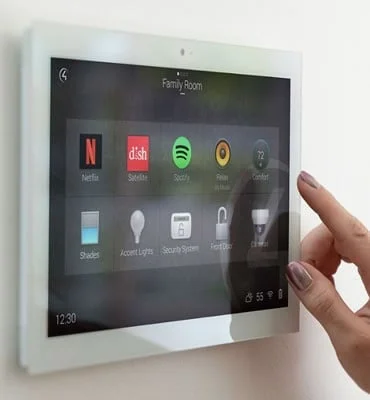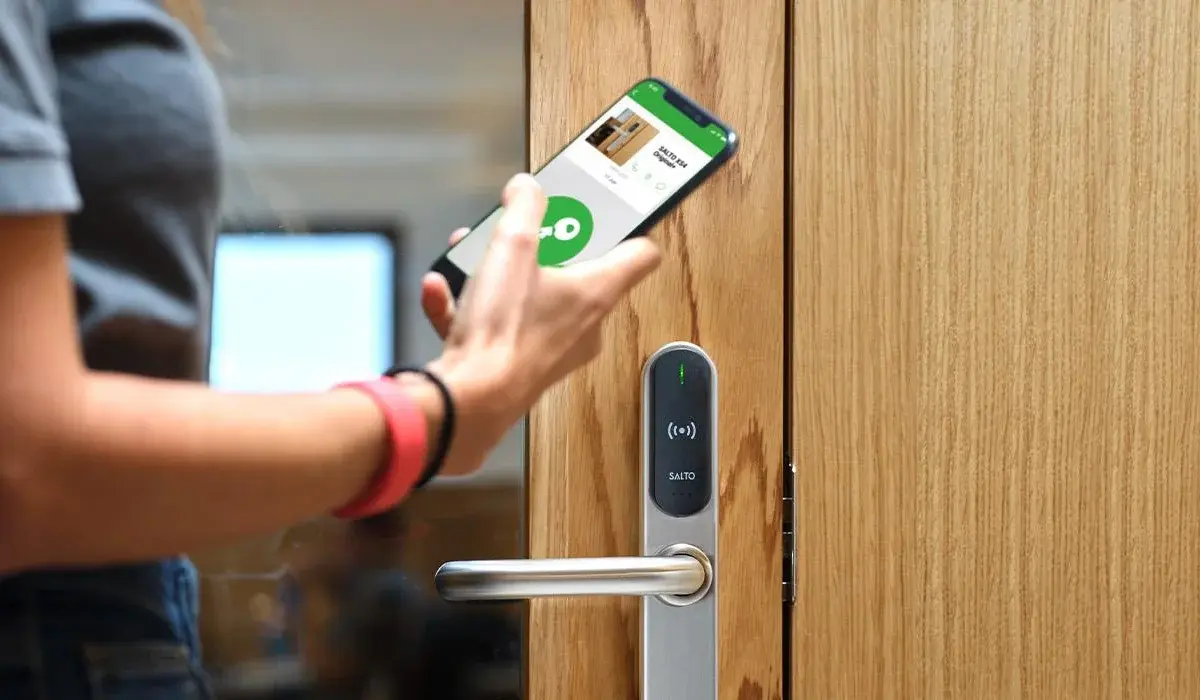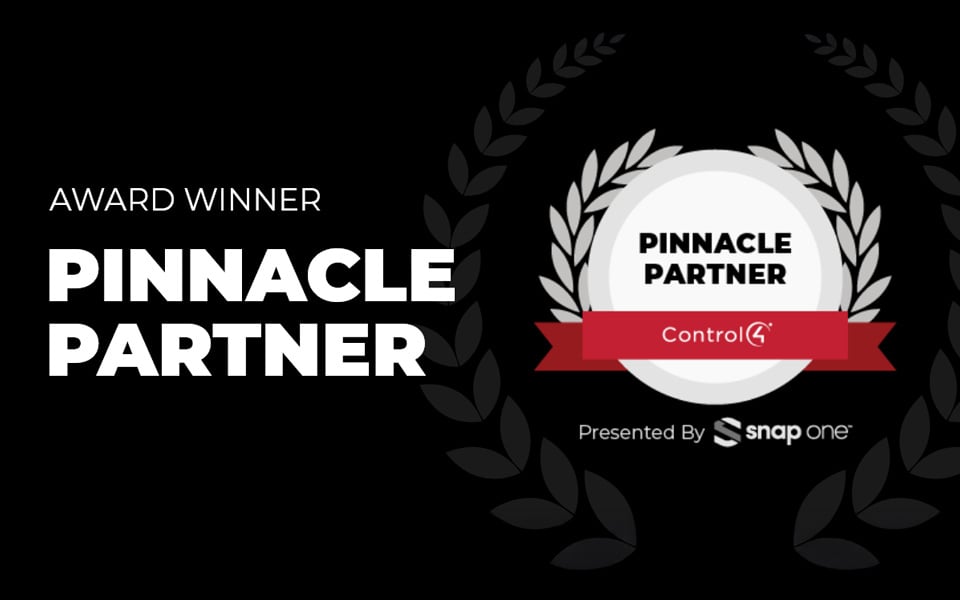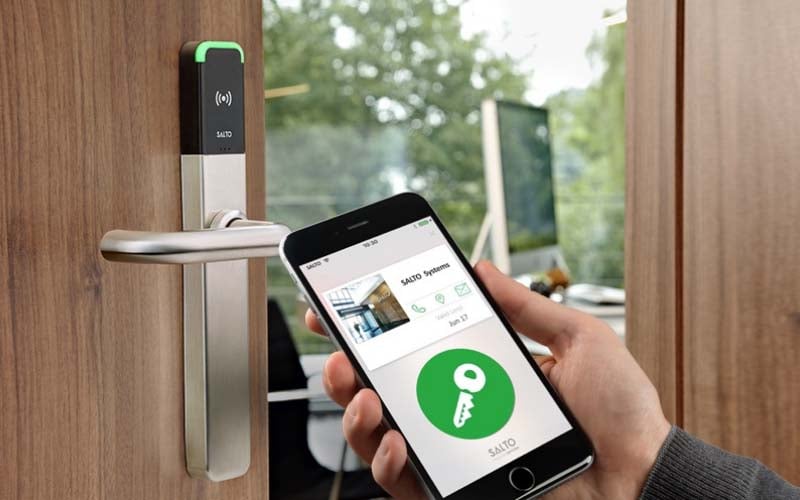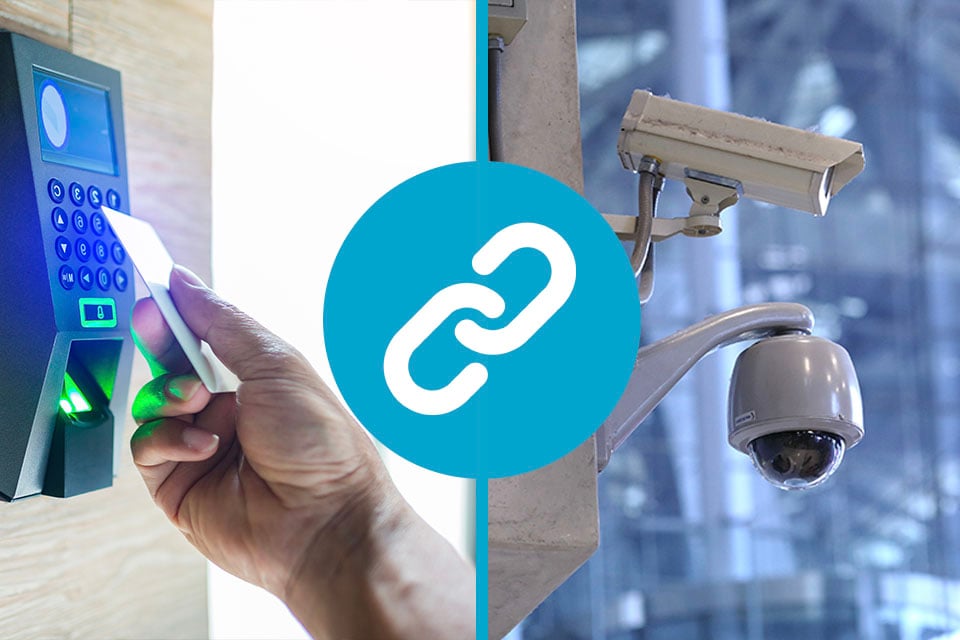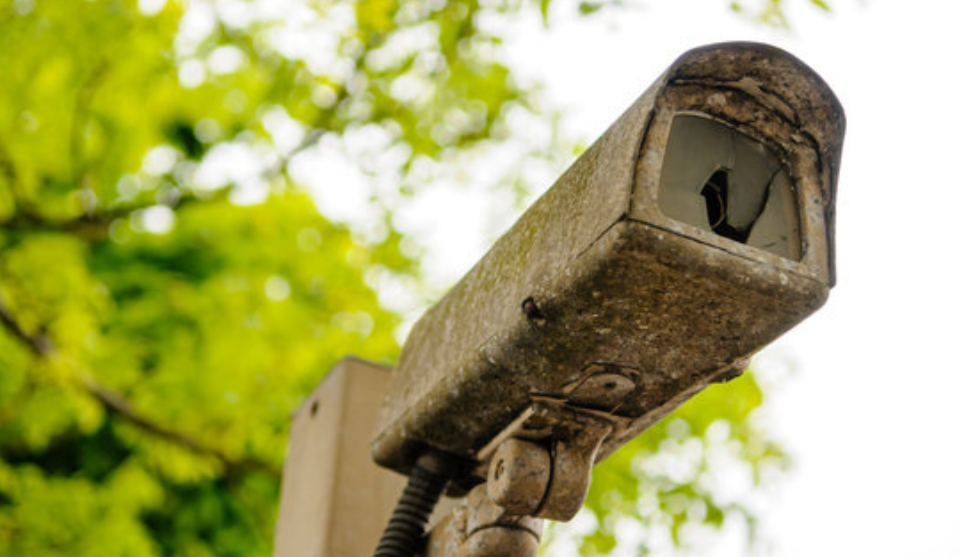In 2023, smart homes are more popular than ever. Homeowners across the globe are switching to a more internet-connected future.
In fact, according to a recent YouGov survey, at least 8% of UK residences now own at least two smart home products. Sure, that might not seem like a big deal, but it’s actually a staggering 1.9 million properties!
Jump To
- What Is Smart Home Technology?
- What Is an Integrated Smart Home?
- How Does Smart Home Technology Work?
- What Are the Benefits of a Smart Home?
- Is Smart Home Technology Safe?
- Considerations
- Final Thoughts
So what’s all the fuss about? Well, in a lot of cases, smart automation simply makes the difference between a bland, boring property and one that excites - but there’s a great deal more to it than that. And if you’ve ever stepped foot into a fully automated house, you’ll understand why.
This article will offer a 101 guide to the basics of smart home tech. We'll look at what the term means, how this technology works, and the things you need to consider before making the switch to smart.

What Is Smart Home Technology?
"Smart home technology" is used to describe internet-connected home systems that automate the things homeowners will use every day. They can boost energy efficiency, security, comfort and style, and all are controllable from a single device.
So what does this technology actually do? The truth is, there’s no real limit to what can be defined as a “smart home” device. Any appliance that automates a process can be labelled “smart”. That may be an off-the-shelf Philips Hue light bulbs, or a unique, custom automatic coffee machine. The beauty of home automation is that it can be tailored to your wants, needs, and budget.
In fact, you may already use this tech. Amazon Alexa, Google Home and Siri are all examples of smart home tech. It’s really no surprise that these virtual home assistants have boomed along with this trend. They offer an entry-level glimpse into what home automation tech can do. Not to mention, they’re also compatible with nearly every smart device. Alexa, turn on the lights!
But of course, if you’re looking for a real smart home, you’ll want to hear about the more advanced stuff. When we talk about this tech, we mean the systems that can supply your life with endless convenience.
- Smart Lighting Systems
- Smart Heating & Air Conditioning Systems
- Smart Security Systems
- Smart Sound Systems
- Smart Garden Technology
- Smart Wi-Fi Systems
- Automated Blinds & Curtains
- Smart Home Cinemas
What Is an Integrated Smart Home?
Through customisation, as well as analysing your routine, smart tech can control your entire property with the click of a button. That means no more fiddling with light switches or wasted time trekking round the house turning things off.
However, the biggest improvements come from integration. Expertly installed smart home systems can work with each other to be still more convenient and even make your property more secure.
With customised settings and rules, users can automate elements of their home based on certain triggers. Let’s say you want your blinds to drop at the same time your lights switch on. Or you want your driveway lights to turn on when the front gate opens. With integration, all this and more is possible. You can connect your sound systems to your home cinema, or to your lighting, to let you control the ambience of your whole house at once.
How Does Smart Home Technology Work?
A smart home shouldn’t be a cluster of separate devices, but a network of systems that work in sync to make your life easier. With this in mind, every smart home needs some form of central control hub to work.
Often called a ‘smart home hub’, this is a device or software that acts as the centre point of the network. It lets the user set preferences and schedules and take full control of the devices in their house.
There are endless ways to manage your devices in 2023. Smart home controls have even been adopted by the latest Apple Watches and voice command Smart Speakers, like Amazon Echo. Find out How to Control Your Home With Smart Home Voice Commands in our blog.
However, there are two common types of control systems: centralised hubs and remote control smartphone apps. You’ll find some homes that use both, and others that only use one.
Centralised Smart Home Control Hubs
Systems like Control4 are the closest thing we have to the space-age living seen in Sci-Fi movies. With a wall-mounted panel, these systems give the user complete control over their residence from a single touchscreen.
This tech removes the need for multiple remote controls and apps to manage different systems. They give you centralised control over your home, and provide a slick, user-friendly way to change each of your systems' settings.

Smartphone Control Apps
App-based control is a great choice if you want to manage your home on the go. With an app installed on your IOS or Android device, you can take control of your systems from anywhere in the world.
As long as your systems are connected to the internet, you can switch them off as you rush out the door, or turn them back on in time for your return. All this can be done at the touch of a button.
What's more, these apps are included as part of the package from suppliers like Control4. So, you’ll be able to make the most of the remote app features whether you choose a wall mounted interface or not.

Intelligent Home Automation
So how does smart tech know when to automate each process? Good question. Most high-end smart home devices feature built-in AI machine learning. This AI will record your usage habits and replicate your daily usage patterns week by week. This adds even more convenience to your life by removing the need to operate many of your systems entirely.
And that’s not all. By connecting to the internet, home automation systems can also automate based on time of day, light levels, temperature and other factors that impact their use.
Take Lutron’s battery-powered Venetian blinds. These systems use built-in software to adjust the blinds in response to the movement of the sun. This means you don’t have to constantly get up to adjust your shades in order to reduce glare and protect flooring, artwork and furniture.
What Are the Benefits of a Smart Home?
The main aim of this tech is to make daily life easier. As a result there are a number of key benefits that this tech can bring.
For one, techs that can pick up on usage patterns are a great option for those who want to reduce their carbon footprint.
Smart heating, lighting and blind systems can gauge temperatures and light levels to bring down power use across the property. Users can also get a view of their energy usage with in-depth metrics.
Some smart techs like Lutron’s lights use motion sensors and occupancy detection software. These can detect if a room is not in use, so it won't power itself while you’re out, reducing energy use.
With app-based control, you can also turn off all of your systems at the tap of a button. This is known as an ‘All-Off’ switch, and it can even be used remotely, or on-the-go. It's great if you tend to leave your lights or heating on. It can even be used to power down your whole home from the comfort of your bed.

Smart tech can also make a big impact on the security of your residence. If you connect your CCTV cameras, smart locks, alarm systems, video doorbells and motion detectors to a mobile app, you can get real-time alerts and updates for issues in your home.
With CCTV integration, suspicious activity will trigger alerts on your device. It can also give you a real-time view of what’s going on. This feature puts you on the front foot against criminal activity and antisocial behaviour. Being informed of potential threats in advance means you can contact the police before rather than after the fact.
Some packages - like those from Control4 - can even boost your home’s safety by simulating occupancy - called ‘Mockupancy’. This copies your typical day-to-day movements around the house, so it looks like someone is home and actively moving around. Your house will seem like a much less easy target if a criminal still thinks it's occupied!

Is Smart Home Technology Safe?
One of the biggest concerns for home automation tech is security. In the broadest sense, smart devices can be hacked - just like any router, laptop or phone. But that doesn’t mean they should be avoided.
A major plus for leading smart technologies is that they can be updated remotely, with no need for costly maintenance call-outs or technicians. This means that your tech can be kept up-to-date with frequent patches to make them less at risk of nasty breaches. At the same time, with remote troubleshooting, your installer can tell if a problem can't be fixed through the internet, and can schedule a visit to solve it before you even ask!
Of course, if your smart home runs off a slow or outdated Wi-Fi system, automatic updates won’t keep you safe on their own. All smart tech relies on your network connection to work. It’s worth thinking of your router as the “front door” to your home automation tech. Without a strong network system guarding the door, it’ll be easy for cybercriminals to access everything from your smart door locks to your CCTV.
That’s why we always advise using a smart meshed network system like Ruckus Wireless. Using WatchGuard AP technology, this Wi-Fi set-up boasts powerful end-to-end encryption, automated firmware patching and antivirus defence. On top of that, Ruckus can create a super fast, high quality network, which actively eliminates "dead zones" around your property.
And don’t forget the basics either. You should always use a strong password and only give access to those you can trust. Not knowing who can remotely access your technology can cause all sorts of headaches.
Considerations
By 2024, the number of smart homes in the UK is expected to have doubled. If you’re looking to stay one step ahead of the pack, now is the time to switch to smart. Smart home tech is only continuing to develop and expand. Setting up the basics will give you endless uses for now, whilst also providing a base to build from in the future.
However, it’s never worth settling for the cheap stuff. By now, if you’re set on turning your house into a smart home, you will have seen the wide range of DIY, plug-in "smart" solutions available off the shelf. Think cheap smart thermostats, smart doorbells, and smart plugs. It's always worth being careful with these items. While they may be cheap, they are much more limited, and their security much more vulnerable. All in all, they’re no match for a fully integrated, professionally installed smart home system.
A trusted installer will make sure that your devices are secure from both a physical and data security point of view. A professional like this will know how to personalise your home automation devices and features to suit your needs. They can even design a system that boosts your security as well as increasing your comfort.

Final Thoughts
The next step is finding the right systems for you. Sure you could begin by purchasing an Apple HomeKit or Control4 system. But as we’ve said, it isn’t truly a smart home if it isn't a network of multiple devices. The key here is combining many systems into one.
That’s not to say you’ll need everything from smart heating to automatic blinds. The key to smart tech is tailoring it to you. That could be automated coffee brewing or something quirky like a dog washer (yes we really did that), make sure it actually makes a difference to your life.
At Chris Lewis Group, we’re here to help with all of your smart home ventures. With over 15 years of experience, we’re early movers in the home automation field, and our team can help you bring your goals to life. Whether you want to increase your security or improve overall well-being, we have the skills, experience and knowledge to make your dream a reality.
Get in touch with us today to see what we can do for you.
Get in touch with our design experts today:
Submit the form below and we will be in touch very shortly.
.webp)
Tom Clarke
Related Posts
Chris Lewis Group Recognised as Exclusive Control4 Pinnacle Dealer
Chris Lewis Group Joins Exclusive Control4 'Pinnacle' Dealer Network The Chris Lewis Group is proud to announce its official recognition as a Control4 Pinnacle dealer, joining an exclusive group of.
What Is Smart Lighting & How Can it Benefit You?
Smart lighting is one of the most in-demand smart home features, and for good reason. If you want to add character and ambience to your home, it can make a huge difference without too much cost. But.
How Much Does a Smart Home Cost?
As experienced smart home installers, we often get asked one key question: How much will it cost? While design and installation costs will naturally vary from project to project, we understand that.




